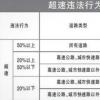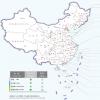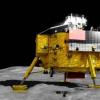This month the United Nations Development Program
This month, the United Nations Development Program made water and sanitation the centerpiece of its flagship publication, the Human Development Report.
Claims of a "water apartheid," where poor people pay more for water than the rich, are bound to attract attention. But what are the economics behind the problem, and how can it be fixed? In countries that have trouble delivering clean water to their people, a lack of infrastructure is often the culprit. People in areas that are not served by public utilities have to rely on costlier ways of getting water, such as itinerant water trucks and treks to wells. Paradoxically, as the water sources get costlier, the water itself tends to be more dangerous. Water piped by utilities - to the rich and the poor alike - is usually cleaner than water trucked in or collected from an outdoor tank.
The problem exists not only in rural areas but even in big cities, said Hakan Bjorkman, program director of the UN agency in Thailand. Further, subsidies made tolocal water systems often end up benefiting people other than the poor, he added.
The agency proposes a three-step solution. First, make access to 20 liters, or 5 gallons, of clean water a day a human right. Next, make local governments accountable for delivering this service. Last, invest in infrastructure to link people to water mains.The report says governments, especially in developing countries, should spend at least 1 percent of gross domestic product on water and sanitation. It also recommends that foreign aid be more directed toward these problems. Clearly, this approach relies heavily on government intervention, something Bjorkman readily acknowledged. But there are some market-based approaches as well.
By offering cut-rate connections to poor people to the water mainline, the private water utility in Abidjan, Ivory Coast, has steadily increased access to clean water, according to the agency&39;s report. A subsidy may not even be necessary, despite the agency&39;s proposals, if a country can harness the economic benefits of providing clean water.
People who receive clean water are much less likely to die from water-borne diseases - a common malady in the developing world - and much more likely to enjoy long, productive, taxpaying lives that can benefit their host countries. So if a government is trying to raise financing to invest in new infrastructure, it might find receptive ears in private credit markets - as long as it can harness the return. Similarly, private companies may calculate that it is worth bringing clean water to an area if its residents are willing to pay back the investment over many years.
In the meantime, some local solutions are being found. In Thailand, Bjorkman said, some small communities are taking challenges like water access upon themselves. "People organize themselves in groups to leverage what little resources they have to help their communities," he said. "That&39;s especially true out in the rural areas. They invest their money in revolving funds and saving schemes, and they invest themselves to improve their villages. "It is not always easy to take these solutions and replicate them in other countries, though. Assembling a broad menu of different approaches can be the first step in finding the right solution for a given region or country.
请帮忙给出正确答案和分析,谢谢!
参考解答
正确答案:
参考译文:联合国开发计划署本月新发布的《人类发展报告》主题是水与卫生。现在有人将穷人获取水资源成本高于富人的现象称为“水隔离”,类似的说法必将引发关注。但是,这一问题涉及的经济因素有哪些?又该如何加以解决呢?在有些国家,人们无法充分获得清洁用水,基础设施不完善是首要原因。有些地区没有公共基础设施,人们不得不从流动水车购水,或者长途跋涉到有水井的地方取水,由此推高他们获取水资源的成本。更为荒谬的是,在获取水资源的成本上升的同时,水质却在下降。自来水通常比流动水车或水井的水更加清洁,对于穷人和富人都是如此。联合国开发计划署泰国项目专员哈坎﹒比约克曼说,这一问题不仅仅涉及农村地区,甚至连大城市也不例外。他还补充说,对地方水利部门提供的补贴受益者往往并不是穷人。联合国开发计划署提出了“三步走”的解决方案。第一步,将每天保证20升(折合5加仑)清洁用水列为一项人权。第二步,由地方政府负责落实上述目标。第三步,投资修建供水基础设施。《人类发展报告》指出,各国特别是发展中国家应该至少拿出GDP的1%用于解决供水和卫生设施问题。该报告还建议国外援助资金也应向这方面倾斜,但比约克曼也明确指出,这显然需要政府部门的引导才行。当然,还有其他一些市场化解决方案。该报告还指出,科特迪瓦首都阿比让的一家私营水厂通过向穷人降价供水,逐步缓解了当地清洁用水问题。开发计划署建议各国政府对供水系统提供补贴,但是,如果能保证供水企业获得相当经济利益的话,就没必要再提供补贴了。在发展中国家,水传染疾病十分常见,但是如果能获得清洁饮用水,人们死于水传染疾病的几率就会大大降低,人们的寿命延长了,生产力提高了,缴税增多了,国家最终也能从中获益。因此,只要国家能保证供水产业的经济效益,就能吸引社会力量投资供水基础设施建设。反过来说,私营供水企业如果确信在一个地区的投资能在多年后收回成本、具有投资价值的话,他们自然也乐意为之。同时,人们也在不断探索本土化解决方案。比约克曼说,在泰国,一些小型社区自发解决供水等社区面临的难题。他说,“人们自发组织起来,利用有限的资源帮助社区解决问题,在农村地区尤为如此。人们把钱投入周转基金和存款计划,并共同出力建设自己的村庄。不过,在其他国家实施、推广这些解决方案并不总是一帆风顺。一个国家或地区要想找到可行的供水解决方案,第一步就是先要整合各种应对之策。”
相似问题
LECCO Italy — Each morning about 450 students tr
LECCO, Italy — Each morning, about 450 students travel along 17 school bus routes to 10 elementary schools in this lakesid
PALOS DE LA FRONTERA Spain — Back home in Gambia
PALOS DE LA FRONTERA, Spain — Back home in Gambia, Amadou Jallow was, at 22, a lover of reggae who had just finished co
即使遇到丰收年景 对中国来说 要用世界百分之七的耕地养活全球五分之一的人口仍是一项艰巨的任务。 中国
即使遇到丰收年景,对中国来说,要用世界百分之七的耕地养活全球五分之一的人口仍是一项艰巨的任务。 中国政府面临许多挑战,最严峻的挑战之一就是耕地
中国人民选择和平发展道路 是基于中国的传统文化 惨痛的历史和现实 的巨大成就所作出的明智选择。中国是
中国人民选择和平发展道路,是基于中国的传统文化、惨痛的历史和现实 的巨大成就所作出的明智选择。中国是一个有5000年历史的文明古国,有着与外来文化
近年来 中国全面把握对外开放阶段性特点 按照完善内外联动 互利共赢 安全高效的开放型经济体系的要求
近年来,中国全面把握对外开放阶段性特点,按照完善内外联动、互利共赢、安全高效的开放型经济体系的要求,总结实践中的成功经验,把“引进来”和“走出












